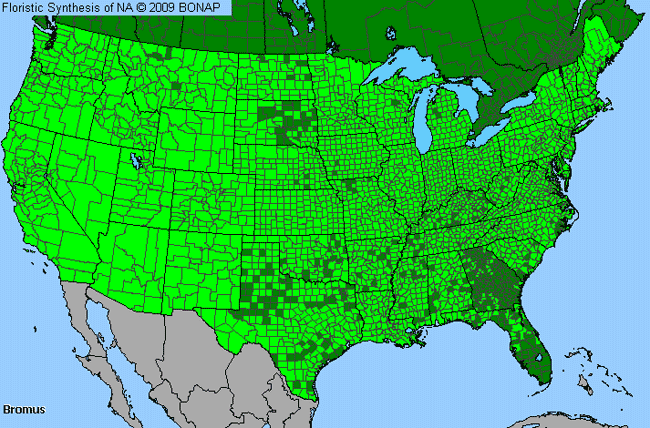Brome (Bromus)

Brome Genus Details

Brome grass, a native U.S. grass genus, is both annual and perennial, depending on where it is growing. Species can grow from 4 inches to 30 inches and are characterized by their densely hariy sheaths and blades. Its infloresence is drooping and one sided. It is widely planted for cover, pasture and hay and is an important forage grass in the western states. Species within this genus vary as to how much pollen they shed.
Brome Allergy Info

This is one of the more significant grass types in terms of allergy.
Brome Pollen Description

Grains are spheroidal to ovoidal, sometimes elliptical. The exine is thin and the surface is granular to finely reticuloid. Poaceae apertures are 1-porate, with the pores usually circular to ovoidal.
Grains are 22-122 micrometers in diameter.
Species in This Genus

Allergenicity Legend:
 Mild Allergen |
Mild Allergen |
 Moderate Allergen |
Moderate Allergen |
 Severe Allergen |
Severe Allergen |
 Allergy Test Available
Allergy Test Available
Brome (Bromus) is a genus of the POACEAE family.
This genus includes the following allergenic species:
This genus includes the following allergenic species:















